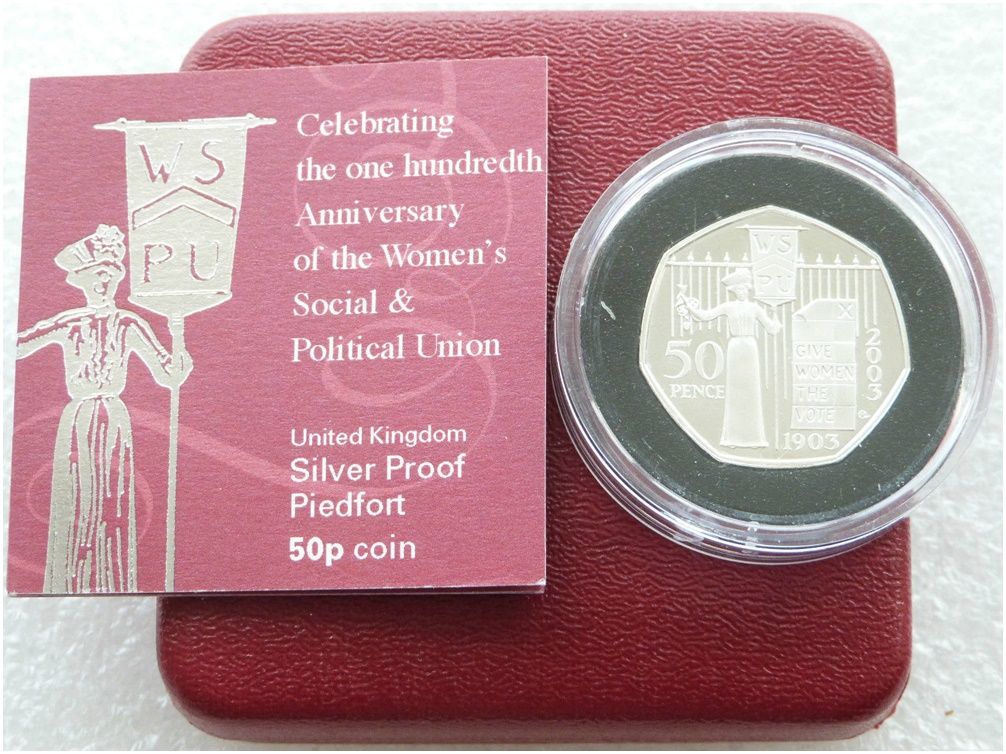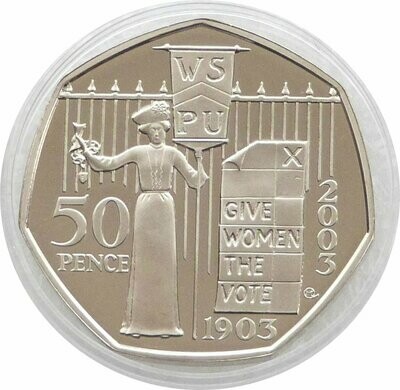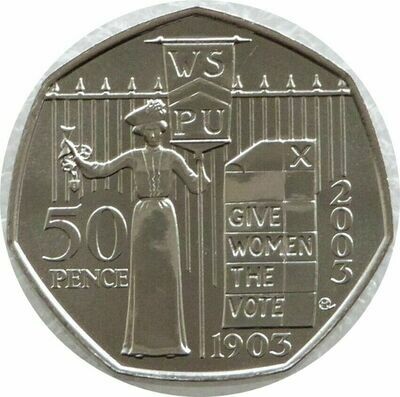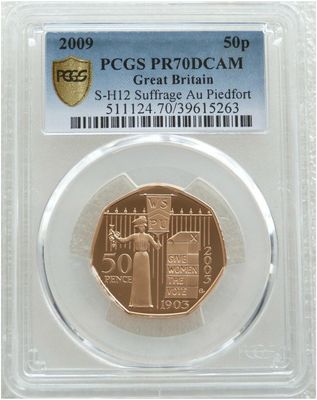2003 Suffragettes Piedfort 50p Silver Proof Coin Box Coa
In 2003, to celebrate the 100th Anniversary of the Women's Social and Political Union, the Royal Mint released a Limited Issue Piedfort 50p Fifty Pence Silver Proof Coin struck in solid .925 Sterling Silver.
The year 2003 is the 100th Anniversary of the formation by Emmeline Pankhurst of the Women's Social and Political Union, the militant wing of the women's suffrage movement. It eventually achieved complete success in 1928 when all women received the right to vote.
Emmeline Pankhurst and a multitude of other women, including her daughter Christabel, were dedicated to obtaining equal rights for women, but the militancy of the Suffragettes alarmed members of Parliament and resulted in the imprisonment of many women.
The outbreak of the First World War in 1914 halted their campaign, and, ironically, it was the crucial contribution women made to the war effort that gave them the success they deserved.
Who among the Suffragettes could have seriously envisaged that before the end of the century, there would have been a female Prime Minister? Today, women receive the same standard of education as men, and just like men, many follow their ambitions and dreams.
Their lives have changed dramatically, and today, women can now take advantage of the rights they have acquired by contributing fully to society in all its aspects.
To celebrate the 100th anniversary of the formation of the Women's Social and Political Union, the Royal Mint is issuing a Limited number of commemorative Piedfort Silver Proof 50p Fifty Pence Coins.
The reverse design by Mary Milner Dickens features a Suffragette, while the obverse bears a portrait of Her Majesty Queen Elizabeth II by Ian Rank Broadley.
These legal tender coins have been struck to proof quality using specially prepared dies and highly polished blanks.
Piedforts are coins which have been specially struck on thicker than normal blanks.
As their name suggests they are closely associated with France, where from the twelfth century they were apparently issued by the Kings as presentation pieces.
In Britain the practise of striking piedforts is later and less frequent, but medieval and Tudor examples are known.
- Limited Mintage of 6,795 Worldwide
- Piedfort Double the Thickness and Weight of its Standard Counterpart
- Minted in Solid .925 Sterling Silver
- Celebrate the 100th Anniversary of the Woman's Social and Political Union
- Royal Mint Boxed with Certificate of Authenticity






